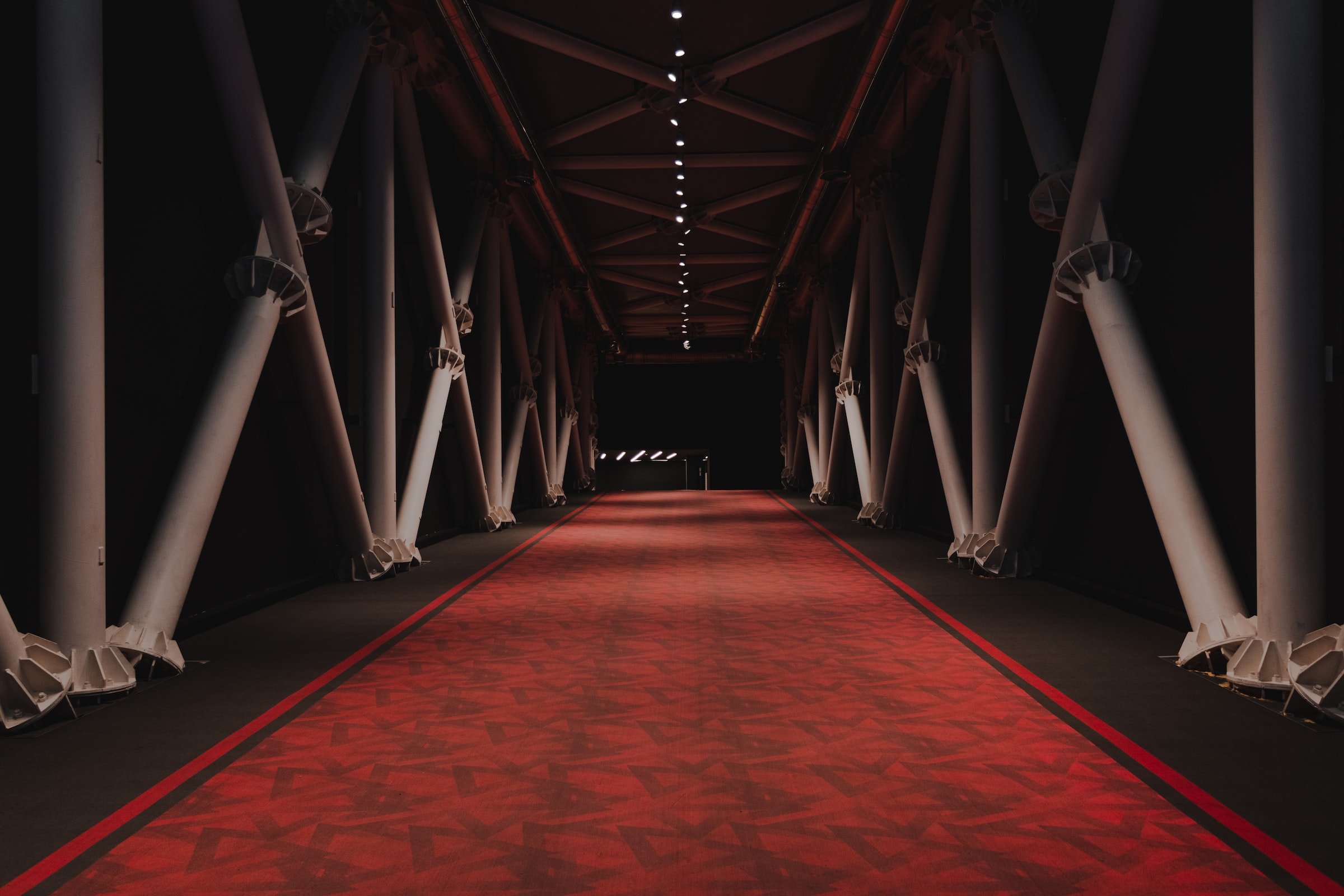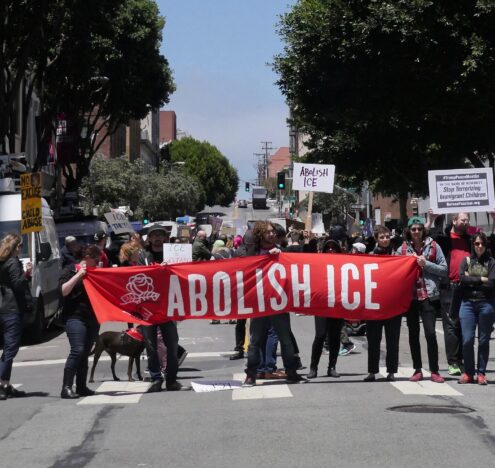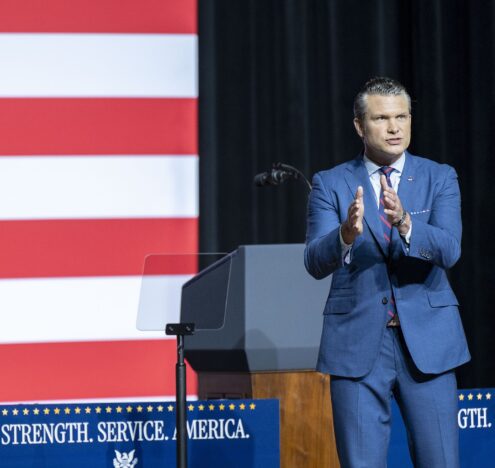On Aug. 7, acclaimed Hollywood actress Jessica Chastain visited Ukraine and joined a growing list of American celebrities who have ventured to the war-torn country since Russia launched its latest, most brutal invasion in February. Like other celebrity visits and public promotions of Ukrainian President Volodymyr Zelenskyy, Chastain’s stop drew mixed reactions online.
Rather than judge Ukraine for attracting the attention of celebrities, we should ask ourselves why their presence in Ukraine or why particular media coverage of Ukraine draws public ire more than others. Negative responses to Ukraine’s, notably Zelenskyy’s, leverage of celebrity interest in his country’s fight underscores how being far-removed from conflict allows Hollywood and other forms of entertainment to dictate what Western audiences expect from war and those who seek their support.
UKRAINE ISN’T JUST A CELEBRITY PHOTO OP
Why are celebrities like Angelina Jolie and Ben Stiller in Ukraine? In their cases, they are a UN Special Envoy for Refugees and a UNHCR Goodwill Ambassador, respectively. Both actors have traveled to countries affected by war and refugee crises to increase Western awareness about the plights affecting their people. Actor Liev Schreiber has been working in Ukraine for months as his organization, BlueCheckUkraine, seeks to fast-track financial support to Ukrainian aid groups. Schreiber is also Ukrainian through his maternal grandfather, who helped to raise him. While the security of these celebrities could be a concern, their visits have been to areas where there are internally displaced Ukrainians, and not to those locations that have been at the forefront of Russian attacks.
Those irritated by Ukraine’s welcoming celebrities and high-profile visitors should consider why. Why criticize how Ukrainians attempt to live and find joy during the war?
Chastain’s visit with Zelenskyy and a local children’s hospital highlighted the continued need for Western aid to Ukrainian civilians. Even Bono and the Edge’s subterranean concert in Kyiv featured Ukrainian musical acts in May 2022 to refocus media attention toward Ukraine. Each of these visits exposes the humanity of the war. Beyond the gruesome videos of Russian soldiers castrating Ukrainian prisoners of war or committing war crimes against civilians, such as in Bucha, we see children smiling and adults standing starstruck as they meet famous Americans. They reinforce the notion that Ukrainians are more than the sum of Russian brutality and victimization, which is important and necessary. But there’s more to it.
Let’s talk about Vogue.
A social media firestorm accompanied Vogue’s July 2022 cover featuring Zelenskyy and his wife Olena. Admittedly, when I first saw the photos, I was baffled. I was concerned that such a photo shoot, especially in luxury glamour magazine Vogue, would undermine Ukrainian pleas for military and financial aid from the United States. Unfortunately, I was right. A Newsweek article following the Vogue release features dissenting voices on social media who called into question the severity of Russian violence in Ukraine. A viral tweet, from an account that regularly tweets COVID and Monkeypox disinformation, now has over 120,000 retweets asking, “how serious is the war in Ukraine?” It features pictures from the Vogue shoot and crystallizes popular Western sentiments about it.
Yet, the question remains, why are Westerners so angry? Why was I worried that these photos could harm Western support for Ukraine? In contrast, Ukrainians responded positively to the shoot and the celebrity visits. Even the optics of the shoot emphasize the wartime atmosphere. Compared to other Vogue covers, Zelenska’s is muted and understated. She does not wear expensive European designers like Prada or Gucci, nor is her face heavily contoured with expensive makeup. In place of expensive art direction, Zelenska stands in front of a bombed-out Ukrainian airplane and defense sandbags. The interview accompanying the pictures is incredibly revealing and has often been overshadowed by the imagery.
Zelenska, like millions of Ukrainian women, must raise children and try to maintain a semblance of normalcy while her husband is at war. As Vogue interviewer, Rachel Donadio states, “If Zelenskyy leads a nation of civilians who overnight turned into combatants, she has visibly carried their emotional toll.” It follows that many Ukrainians supported her — she was showing the world another facet of warfare. After all, life happens even as the bombs drop around you.
WHAT DO OUR RESPONSES SAY ABOUT US?
Negative responses to these instances of celebrity PR reveal the zero-sum quality of Western public thinking and understanding of war. Those irritated by Ukraine’s welcoming celebrities and high-profile visitors should consider why. Why criticize how Ukrainians attempt to live and find joy during the war? Why does it bother you when Ukrainians in locations such as Lviv, hundreds of miles from conflict centers like Mykolaiv and Kharkiv, go to cafes (when they are not in basements waiting for the all-clear from air raid sirens)? Why should five photographs of Olena and Volodymyr Zelenskyy contradict hundreds of images and videos of mass death, destruction, and suffering? Life and death coincide and collide in war zones, as the pregnant women who have given birth in bomb shelters can attest.
What Zelenskyy and Ukrainians have mastered is keeping Ukraine in the Western media cycle. Media exhaustion threatens continued Western support, and Ukrainians learned the immense costs of losing Western attention the hard way. How many people were reminded of or learned that Ukraine had been invaded in 2014 and that Russian-supported forces maintained a hot conflict in the Donbas? For the eight years preceding the February invasion, over 13,000 people died in the conflict. How many celebrity visits or Western magazine covers did these deaths garner?
Zelenskyy is aware of the benefits of star power, one of his most powerful tools as a president. A post on his Telegram channel featuring Chastain mentions, “For us, such visits of famous people are extremely valuable. Thanks to this, the world will hear, know and understand the truth about what is happening in our country even more. Thanks for the support!” The costs of succumbing to media fatigue are simply too high for Ukraine. There is instability and frailty in dependence on Western military, financial, and humanitarian aid. Therefore, Ukrainian leaders know they need to garner our attention in any way possible. It is also why Stiller and Jolie are taking photos and visiting refugees in Yemen and Guatemala.
What does it say about the West that human suffering in wars needs Goodwill Ambassadors to make us “aware?” What does it say about us that Vogue photoshoots carry more coverage than children dying? And more importantly, who are we to make demands of how Ukrainians or other victims of war experience said war? What has shaped our expectations?
Perhaps the root of this anger, if we operate in good faith, comes from the commodification and consumption of “foreign” violence. Hollywood films that glorify war rarely depict what happens to civilians. We do not get Blockbuster movies featuring refugees who were pushed to a country they know nothing about and whose language they do not speak — dependent upon a foreign government to want to keep them there. Audiences imbibe heroic violence and the depths of human misery. Thus, when we see behaviors that contradict these archetypes, we refuse to believe their sincerity. To be frank, media exhaustion and Ukraine fatigue means that there is a premium on empathy and attention for the foreign “other.”
Ukrainians have garnered more support and attention than other peoples victimized by war, Syrians, Yemenis, and Cameroonians (and others), but this disparity is not their fault. I do not have an answer to how we can move beyond this seemingly endless cycle of consuming sorrow. Many of us continue on, and from the safety of our homes and computers, we can comment on the methods others use to stay alive. But we should remember that for every photo shoot or celebrity Ukraine visit, Ukrainians are giving an audience what it has demanded in order to continue fighting for their country’s future. If we do not like what we see, we need to consider why we, the audience, have come to expect it.
Kimberly St. Julian-Varnon is a Ph.D. student in History at the University of Pennsylvania. She holds an MA in Russian, Eastern European, and Central Asian Studies from Harvard University.




















